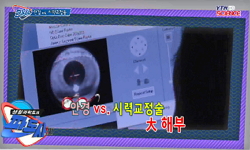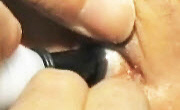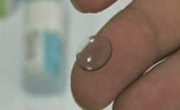Purpose: In this study, nutrient intake during the adolescent period is a critical time for the development of thevision. Therefore we analyzed the relationship between the obesity index and the refractive power. Methods: Weused the Korean National He...
http://chineseinput.net/에서 pinyin(병음)방식으로 중국어를 변환할 수 있습니다.
변환된 중국어를 복사하여 사용하시면 됩니다.
- 中文 을 입력하시려면 zhongwen을 입력하시고 space를누르시면됩니다.
- 北京 을 입력하시려면 beijing을 입력하시고 space를 누르시면 됩니다.

청소년기 비만도 지수와 굴절력과의 상관성 연구 = Study on Relationship between the Obesity Index and the Refractive Power in Adolescent
한글로보기https://www.riss.kr/link?id=A103824095
- 저자
- 발행기관
- 학술지명
- 권호사항
-
발행연도
2013
-
작성언어
Korean
-
주제어
Nutrient ; Vision ; Refractive power ; Broca index ; Body mass index (BMI) ; 영양소 ; 시력 ; 굴절력 ; 브로카지수 ; 체질량지수
-
등재정보
KCI등재
-
자료형태
학술저널
-
수록면
329-339(11쪽)
-
KCI 피인용횟수
1
- 제공처
-
0
상세조회 -
0
다운로드
부가정보
다국어 초록 (Multilingual Abstract)
Purpose: In this study, nutrient intake during the adolescent period is a critical time for the development of thevision. Therefore we analyzed the relationship between the obesity index and the refractive power. Methods: Weused the Korean National Health and Nutrition Examination Survey 2010 document. The obesity index isclassified as Broca index (less than 80.0% is low weight, 80 to 89.9% is underweight, 90.0 to 109.9% is normal,overweight is from 110.0 to 119.9%, 120.0% or more is obesity) and body mass index (BMI)(less than 18.5 isunderweight, 18.6~22.9 is normal, 23.0 to 24.9 is overweight, and obesity is higher than 25.0). We analyzedcorrelation with the body mass index and refractive error in adolescent. Results: As shown in the statistics,according to Broca index and body mass index (BMI), the refractive power and the obesity index showed astatistically significant correlation in the ages 15 to 18. Under weight subjects are ingested 43.84% dietary fiber,vitamin C 56.55%, 35.20% iron, 31.84% of, and 38.03% potassium less than the average food intake by thestandard group. Conclusions: Moderate weight with a broad variety of taking nutrition and good eating habitsseems to have an effect to the good growth and the good vision.
국문 초록 (Abstract)
목적: 본 연구는 영양소 섭취가 중요한 시기인 청소년기에 비만도와 굴절력과의 관계를 분석하였다. 방법: 본 연구는 보건복지부 산하 질병관리본부에서 시행한 2010 국민건강영양조사 자료...
목적: 본 연구는 영양소 섭취가 중요한 시기인 청소년기에 비만도와 굴절력과의 관계를 분석하였다. 방법: 본 연구는 보건복지부 산하 질병관리본부에서 시행한 2010 국민건강영양조사 자료를 기준으로 하였으며, 비만도는 브로카지수(80.0%미만이면 저체중, 80.0~89.9%이면 체중부족, 90.0~109.9%이면 정상, 110.0~119.9%이면 과체중,120.0%이상 이면 비만)와 체질량지수(18.5이하이면 저체중, 18.6~22.9이면 정상, 23.0~24.9이면 과체중, 25.0이상이면 비만)로 분류하여 청소년을 대상으로 비만도와 굴절력과의 상관성을 조사하였다. 결과: 브로카지수와 체질량지수분류에 따른 등가구면 굴절력의 분산분석에서 알 수 있듯이 청소년기 15~18세 사이 집단에서 브로카지수와 체질량지수에 따라 등가구면 굴절력과의 유의한 차이를 보였다. 브로카지수가 정상이면서 정시인 기준안을 기준으로 영양소 섭취를 비교한 결과 저체중 집단은 식이섬유 43.84%, 비타민 C 56.55%, 철 35.20%, 인 31.84%, 그리고 칼륨38.03%등의 영양 섭취를 적게 섭취하는 것으로 나타났다. 결론: 시력발달에 중요한 성장의 시기에 다양한 영양소의균형 잡힌 고른 섭취 및 좋은 식습관에 의한 적정 비만도 유지는 건강과 더불어 건강한 시력을 유지하는데 영향을주는 것으로 판단된다.
참고문헌 (Reference)
1 이석주, "학령기 아동의 안경착용이 근시진행에 미치는 영향" 한국안광학회 16 (16): 195-200, 2011
2 김혜경, "울산지역 대학생의 성별과 체중상태에 따른 건강관련 생활습관, 영양지식, 식습관 및 혈액성분의 비교" 한국영양학회 45 (45): 336-346, 2012
3 예기훈, "소득에 따른 성장기 영양소 섭취와 굴절력과의 관계" 한국안광학회 18 (18): 213-229, 2013
4 강지은, "도시 초등학교 4학년의 굴절이상과 안 계측치" 대한안과학회 45 (45): 15-15, 2004
5 Vokes T., "Water homeostasis" 7 (7): 383-406, 1987
6 Michaels DD., "Visual optics and refraction" C.V. Mosby 458-483, 1985
7 Mutti DO, "The utility of three predictors of childhood myopia: a Bayesian analysis" 35 (35): 1345-1352, 1995
8 Kim JM, "The risk factors for diabetic retinopathy" 37 (37): 759-764, 1996
9 Rose K., "The increasing prevalence of myopia : implication for Australia" 29 (29): 116-120, 2001
10 Tayle HR., "The environment and lens" 64 (64): 303-310, 1980
1 이석주, "학령기 아동의 안경착용이 근시진행에 미치는 영향" 한국안광학회 16 (16): 195-200, 2011
2 김혜경, "울산지역 대학생의 성별과 체중상태에 따른 건강관련 생활습관, 영양지식, 식습관 및 혈액성분의 비교" 한국영양학회 45 (45): 336-346, 2012
3 예기훈, "소득에 따른 성장기 영양소 섭취와 굴절력과의 관계" 한국안광학회 18 (18): 213-229, 2013
4 강지은, "도시 초등학교 4학년의 굴절이상과 안 계측치" 대한안과학회 45 (45): 15-15, 2004
5 Vokes T., "Water homeostasis" 7 (7): 383-406, 1987
6 Michaels DD., "Visual optics and refraction" C.V. Mosby 458-483, 1985
7 Mutti DO, "The utility of three predictors of childhood myopia: a Bayesian analysis" 35 (35): 1345-1352, 1995
8 Kim JM, "The risk factors for diabetic retinopathy" 37 (37): 759-764, 1996
9 Rose K., "The increasing prevalence of myopia : implication for Australia" 29 (29): 116-120, 2001
10 Tayle HR., "The environment and lens" 64 (64): 303-310, 1980
11 Kim JH., "The developing a algorism for the predicting myopia of early school-aged children" Ewha womans University 2003
12 Hong SM., "The causative food syndrome" Kugil Media 30-80, 2005
13 Curtin BJ., "The Myopias: Basic science and clinical management" Haper & Row Pulication 29-201, 1985
14 Park BI, "Study on visual acuity and refractive state in primary school children" 19 (19): 391-397, 1978
15 Chung BC, "Relationship between obesity indices and risk factors of artherosclerosis in type 2 diabetics" 12 (12): 93-107, 2003
16 Jin YH., "Refraction and prescription" UUP 73-74, 2007
17 Park MY, "Power food Super food" Prun Hangbok 268-, 2011
18 Goldschmidt E., "On the etiology of myopia an epidemiological study" 98 (98): 115-134, 1968
19 Criswell MH, "Myopia development in nonhuman a primates-a literature review" 60 (60): 250-268, 1983
20 Dunphy EB, "Myopia among american male graduate students" 65 (65): 518-521, 1968
21 Greene PR., "Mechanical consideration in myopia : relative effects of accommodation, convergence, intraocular pressure, and extraocular muscle" 57 (57): 902-914, 1980
22 Wallman J, "Local retinal regions control local eye growth and myopia" 237 (237): 73-77, 1987
23 Knowler WC, "Increased incidence of retinopathy in diabetics with elevated blood pressure. a six-year follow up study in Pima Indians" 302 (302): 645-650, 1980
24 Rose KA., "High heritability of myopia dose not preclude rapid changes in prevalence" 30 (30): 168-172, 2002
25 Karlsson JL., "Genetic factors in myopia" 25 (25): 292-294, 1976
26 Sorsby A, "Family studies on ocular refraction & its components" 3 (3): 269-273, 1966
27 Saw SM, "Factors related to the progression of myopia in singaporean children" 77 (77): 549-554, 2000
28 Christensen AM, "Evidence that increased scleral growth underlies visual deprivation myopia in chicks" 32 (32): 2143-2150, 1991
29 Yu KH., "Establishment of dietary fiber database and analysis of the dietary fiber intake of the Korean adult population using 2001 : Korean national health and nutrition survey data" Chungnam National University 2009
30 Jacques PF, "Epidemiologic evidence of a role for the antioxidant vitamins and carotenoids in cataract prevention" 53 (53): 352-355, 1991
31 Kirby AW, "Elongation of cat eyes following neonatal lid sutures" 22 (22): 274-277, 1982
32 Berl T, "Disorders of water metabolism. In : Schrier RW. Renal and electrolyte disorders" Lippincott-Raven 54-, 1997
33 Gollender M, "Development of axial ocular dimensions following eyelid suture in the cat" 19 (19): 221-223, 1979
34 Kim GN, "Consumption of dietary fat and antioxidant vitamins, and associated nutrition knowledge & factors among college students" 100-101, 2005
35 Fanestil DD., "Compartmentation of body water, In Clinical disorders of fluid and electrolyte metabolism" McGraw-Hill 3-20, 1994
36 Yang HJ., "Clear the brain" Bookin 200-260, 2011
37 Oren A, "Change in body mass index from adolescence to young adulthood and increased carotid intimamedia thickness at 28 years of age" 27 (27): 1383-1390, 2003
38 Kim JH, "An ecological study on eating behavior of middle school students in Seoul" 3 (3): 292-307, 1998
39 Donder FC., "Accommodation and refraction of the eye" RE Krieger 429-, 1979
40 Lee KH, "A Study on dietary fiber intakes of Korean" 23 (23): 767-773, 1994
동일학술지(권/호) 다른 논문
-
역방향 실리콘 하이드로겔 렌즈 착용에 따른 각막 굴절력 변화
- 한국안광학회
- 김수현
- 2013
- KCI등재
-
- 한국안광학회
- 윤민화
- 2013
- KCI등재
-
- 한국안광학회
- 유영국
- 2013
- KCI등재
-
콘택트렌즈의 물리화학적 특성에 따른 라이소자임과 알부민의 흡착 특성
- 한국안광학회
- 성유진
- 2013
- KCI등재
분석정보
인용정보 인용지수 설명보기
학술지 이력
| 연월일 | 이력구분 | 이력상세 | 등재구분 |
|---|---|---|---|
| 2022 | 평가예정 | 재인증평가 신청대상 (재인증) | |
| 2019-01-01 | 평가 | 등재학술지 유지 (계속평가) |  |
| 2016-01-01 | 평가 | 등재학술지 유지 (계속평가) |  |
| 2012-01-01 | 평가 | 등재학술지 유지 (등재유지) |  |
| 2009-01-01 | 평가 | 등재학술지 선정 (등재후보2차) |  |
| 2008-01-17 | 학회명변경 | 영문명 : The Korean Ophalmic Optics Society -> The Korean Ophthalmic Optics Society |  |
| 2008-01-01 | 평가 | 등재후보 1차 PASS (등재후보1차) |  |
| 2006-01-01 | 평가 | 등재후보학술지 선정 (신규평가) |  |
학술지 인용정보
| 기준연도 | WOS-KCI 통합IF(2년) | KCIF(2년) | KCIF(3년) |
|---|---|---|---|
| 2016 | 0.62 | 0.62 | 0.53 |
| KCIF(4년) | KCIF(5년) | 중심성지수(3년) | 즉시성지수 |
| 0.58 | 0.58 | 0.691 | 0.17 |




 ScienceON
ScienceON DBpia
DBpia





